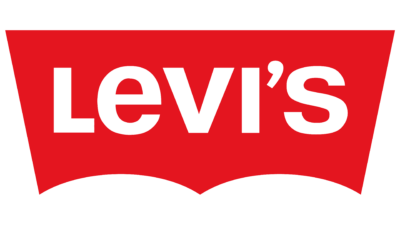this that this that
Brand Archetypes
The Everyman
The archetype next door, sort of speak, who learns how to connect by fitting in.
What is the Everyman Brand Archetype?
The Everyman is the archetype that relates. This is the brand that understands. It welcomes.
Grounded in Honesty, Defined by Belonging
Everyman brands are driven by the belief that most people just want quality, fairness, and to be treated like they matter, without the pretense, without the aspiration, without the judgment. They see the world as full of regular folks tired of brands that either talk down to them or make them feel inadequate. And they're not dumbing things down—they're being real. Because authenticity matters. Because belonging matters. Because honesty demands it. The ordinary deserves respect.
What are some examples of Everyman brands?
- Gap
- Levi's
- McDonald's
- IKEA
- Target
The Psychology of The Everyman Brand Archetype
Map this to the Enneagram and you get Type 9: The Peacemaker. The deep belief that everyone deserves dignity, that common ground matters more than differences, and that the best communities are the ones where everyone belongs.
Everyman brands are fueled by empathy for regular people living regular lives. They believe that not everyone wants to be exceptional, that there's dignity in ordinary life, and that most people just want products that work, prices that are fair, and brands that treat them like humans, not demographics. They ask: "Why can't good things just be accessible to everyone?" So they democratize. They include. They never stop serving the many, not the few.
This is why IKEA doesn't just sell furniture—they make well-designed home goods accessible to people who don't have interior designer budgets. "The wonderful everyday" isn't ironic; it's their entire philosophy that everyone deserves a home that works and looks decent, regardless of income. Similarly, Levi's doesn't just make jeans—they created the uniform of democracy, worn by cowboys and CEOs, rebels and accountants, because good jeans shouldn't be a luxury item.
The Everyman Brand's Promise
Every Everyman brand makes the same core promise: "You belong here," which is selling inclusion and reliability. That is, the quality, value, and respect you need to feel like this brand is for people like you.
Take Target. They didn't become "Tar-zhay" (a beloved nickname suggesting Target is somehow fancy) by being actually fancy. They became beloved by offering "design for all, "making decent-looking products available at reasonable prices to regular people. Their partnership with designers like Isaac Mizrahi and Michael Graves said: you deserve design, you don't need to shop at boutiques, you're worth it. They understand their customers are looking for value that doesn't feel cheap.
Or consider McDonald's, a fast-food chain that became global by being reliably, accessibly, unapologetically for everyone. "You deserve a break today" spoke to universal exhaustion. "I'm Lovin' It" just says this food will make you feel good right now. McDonald's at its best says: whoever you are, wherever you are, you're welcome here and we've got something for you.
The Everyman Brand's Core Values
Democratic Access: Everyman brands believe good things should be available to everyone. IKEA's flat-pack model, massive production scale, and self-assembly approach all serve one purpose: make decent furniture affordable. Target's "Expect More. Pay Less" is their promise that value and quality can coexist. Access is an Everyman's philosophy.
Honest Value: Everyman brands deliver what they promise without tricks. Levi's makes jeans that last, priced fairly for what you get. McDonald's doesn't claim to be cuisine, but they're fast, consistent, affordable food. Gap sells basic clothing staples at reasonable prices. No bait-and-switch, no fine print surprises. You know what you're getting.
Unpretentious Reliability: Everyman brands try to be dependable. McDonald's tastes the same in Tokyo, Topeka, and Toronto—that consistency is the point. Levi's 501s have looked basically the same for generations because if it works, don't fix it. IKEA's Billy bookcase has been in production since 1979. Reliability beats novelty.
Inclusive Belonging: Everyman brands create spaces where everyone fits. Target stores welcome everyone from college students to retirees, from broke to comfortable. McDonald's serves businesspeople and families, teens and seniors. Gap makes basics that work for multiple body types and styles. Exclusivity is the enemy—if someone feels like they don't belong, the brand has failed.
Practical Simplicity: Everyman brands strip away complexity and pretense. IKEA's Swedish names and simple designs. Levi's straightforward denim in classic cuts. Gap's name itself suggests "filling the gap" between designer and discount. McDonald's menu is simple. Everyman brands make life easier.
What are the Everyman Brand's Sub-Archetypes?
While all Everyman brands share core values, they express them differently. Understanding these nuances helps brands fine-tune their positioning and messaging.
The Regular Guy/Gal
Relatable and unpretentious, this sub-archetype is your neighbor, your coworker, the person you'd grab a beer with. Levi's embodies this: jeans for regular people doing regular things. Levi's advertising has featured ranchers, factory workers, artists—real people, not models playing at normal. The Regular Guy/Gal's potential pitfall can be becoming so ordinary they're forgettable, or "regular" becoming code for "boring."
The Good Neighbor
Community-focused and supportive, the Good Neighbor is there for you when you need them. Target operates as the Good Neighbor. They're the store you run to when you need something, whether it's toilet paper or a birthday gift. They sponsor local schools, support communities, and position themselves as the helpful retail presence every neighborhood needs. The risk? Good Neighbors who fail to deliver (empty shelves, poor service) violate the core promise.
The Realist
Practical and no-nonsense, the Realist doesn't oversell or overpromise. McDonald's operates as the Realist because they're not claiming to change your life, just feed you quickly and affordably. IKEA is also Realist energy—"Yes, you have to assemble it yourself, but that's why it's cheap." The trap can be cynicism, or practicality that becomes so utilitarian it's joyless.
The Democrat
Accessible and egalitarian, the Democrat believes everyone deserves access to good things. IKEA embodies this sub-archetype with their mission to "create a better everyday life for the many people." Gap's "American Democracy" positioning (everyone can wear these jeans) lives here. The danger lies in being so accessible you become bland, or democracy becoming "lowest common denominator."
The Unifier
Bridge-building and inclusive, the Unifier brings different people together. McDonald's at its best operates as Unifier—their restaurants serve as common ground where diverse people share space and experience. Their global presence means McDonald's is a familiar touchpoint whether you're in Mumbai or Minneapolis. The pitfall? Trying to please everyone can mean satisfying no one fully.
Building an Authentic Everyman Brand
Price Must Reflect Value: Don't overcharge regular people. IKEA's business model exists to keep prices low. Target works on tight margins. McDonald's dollar menu served real needs. Everyman brands that get greedy lose their identity and their customers. Fair pricing is a convenance.
Stay Relatable: Don't let marketing department sophistication create distance from customers. Levi's ads feature real denim, real wear, real people, not high-fashion nonsense. McDonald's advertising (at its best) reflects actual customer experiences. The moment you stop understanding your customers' lives is the moment you stop being Everyman.
Deliver Consistent Quality: Reliability matters more than excellence. McDonald's fries taste the same everywhere—that's not lack of innovation, it's the promise kept. IKEA furniture is predictable quality at predictable prices. Gap's basics fit the same way every time. Consistency builds trust; excellence is optional for Everyman brands.
Create Spaces of Belonging: Make everyone feel welcome. Target's store design is bright, clean, and navigable. McDonald's provides free WiFi and doesn't rush people out. IKEA's cafeteria feeds families affordably during shopping trips. Physical and cultural spaces must say "you're welcome here" to everyone.
Don't Fake It: Authenticity can't be manufactured. Levi's actually did clothe miners and cowboys, meaning, yes their heritage is real. IKEA's founders really did build the company on democratic design principles. Target really does partner with designers to make good design accessible. If your Everyman positioning is cosplay, customers will smell it.
Respect the Ordinary: Don't treat regular life as something to escape from. IKEA celebrates "the wonderful everyday," not despite it being ordinary, but because it is. Levi's honors workwear heritage. McDonald's embraces being fast food without apologizing. The ordinary has dignity. Everyman brands must genuinely believe that.
The Everyman archetype endures because it speaks to something fundamental: the human need to belong, to be treated fairly, and to access quality without pretense or judgment. In a culture increasingly segmented by wealth, taste, and aspiration, Everyman brands offer the radical promise that good things can be for everyone.
They remind us that ordinary life has dignity. That most people don't want to be exceptional; they want to be respected. That belonging matters more than standing out. And that the best brands are often the ones that make us feel like we're exactly where we should be, exactly as we are.
The Everyman Connection Strategy
Through developing common ground and virtues, the Everyman will be able to be at ease to be themself. They never want to be put up above others and they fear being singled out or unwelcome.
The Everyman Brand Voice
Friendly
Humble
Authentic
The Everyman Brand Colors

Everyman Brand Examples


![]()


